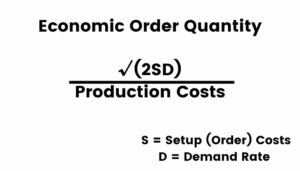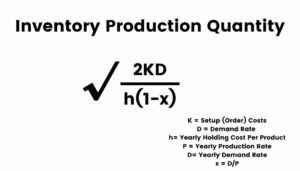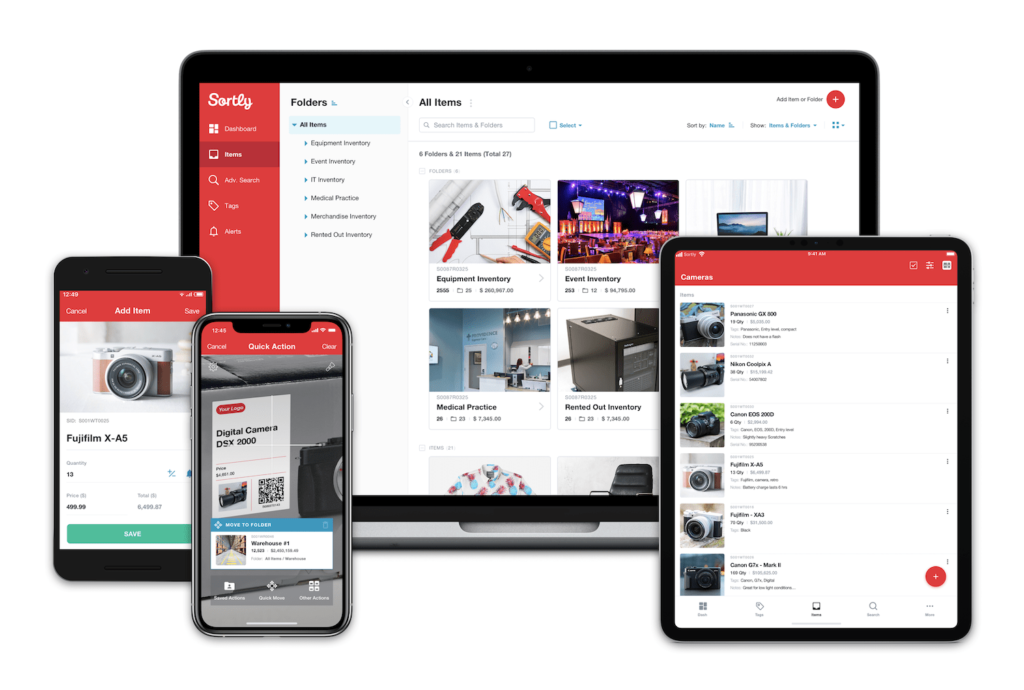Ordering the correct amount of inventory can feel overwhelming. Ordering too much can really cost you, whereas not having enough loses you money and customers. So how do you know how much inventory to order? That’s where inventory control models come into play.
In this article, you’ll learn what some of the most common inventory control methods are to use in inventory management so that you can run a leaner, more efficient business.
What is inventory control?
Accurate inventory control provides important information about your business that you don’t want to “ballpark.” You can find out which products are selling and which ones aren’t, which items you need to have in stock, and specifically how much is needed. Once you know these details, you can reduce operational expenses, lower storage costs, and save your business money.
So how do you figure out your ideal inventory number? By using an inventory control model.
What are the three most common inventory control models?
Each inventory model has a different approach to help you know how much inventory you should have in stock. Which one you decide to use depends on your business.
Inventory control method #1: economic order quantity (EOQ)
The Economic Order Quantity inventory management method is one of the oldest and most popular. EOQ lets you know the number of inventory units you should order to reduce costs based on your company holding costs, ordering costs, and rate of demand.
Here’s how to calculate your EOQ:

Take the square root of (2SD) / Production Cost
S is your setup (order) costs
D is your demand rate (units)
But the EOQ makes some big assumptions that won’t work for every company. It assumes your rate of demand, ordering costs, and unit price of inventory is constant. So if you tend to have periods of time where the demand for your products is a lot lower or higher than other periods, the EOQ number will be meaningless.

Free Ebook: Getting Started With Inventory Tracking
This easy, comprehensive guide will help you:
- Determine your business's inventory levels and needs
- Organize your inventory for optimal tracking
- Follow tried-and-true best practices for inventory management
Inventory control method #2: inventory production quantity
Also known as Economic Production Quantity, or EPQ, this inventory control model tells you the number of products your business should order in a single batch, in hopes of reducing holding costs and setup costs. It assumes that each order is delivered by your supplier in parts to your business, rather than in one full product.
This model is an extension of the EOQ model. The difference between the two models is the EOQ model assumes suppliers are delivering inventory in full to your customer or business.
Here’s how to calculate your Inventory Production Quantity:

Take the square root of (2SD) / Production Cost (1 – x)
S is your setup (order) costs
D is your demand rate (units)
X is your Demand Rate / Production Rate
This model could be a good fit for your business if:
- Your business tends to order inventory from suppliers in parts rather than one full order, such as for an automotive company.
- Demand for products is consistent over periods of time.
Inventory control method #3: ABC analysis
The more money specific inventory brings you, the more important it is to you. ABC analysis categorizes your inventory based on levels of importance. By knowing which inventory is the most important, you know where to focus your attention. To be most effective, ABC Analysis is frequently used with other inventory management strategies, such as the Just in Time method.
Inventory is categorized into either group A, B or C. So how do you know which category to put inventory under? It’s based on the 80/20 rule, also known as the Pareto Principle.
Experience the simplest inventory management software.
Are you ready to transform how your business does inventory?
The Pareto principle
Category A: Inventory under this category brings in the most money and is only a small amount of your total inventory. This is the crème de la crème of your stock. It’s only 20 percent of your inventory but brings in 70 percent of total revenue. Category A inventory is given the most amount of attention and has tight ordering controls in place.
Category B: Unlike Category A inventory, this B inventory is not vital for your business to survive, but it still matters. It’s 30 percent of your stock with 25 percent revenue.
Category C: Inventory categorized under C is 50 percent of your products with 5 percent revenue. This inventory doesn’t bring in as much profit as A and B, but it’s consistent. Inventory controls are pretty loose here since it brings in such a small amount of income.
If your company offers services or products that all vary dramatically in price, such as a landscaping company, this will be an effective model for you.
A good example is Amazon, whose products cover a large range of prices. Not every item you see listed on their website is in stock. That would lead to incredibly high holding costs, making it difficult to turn a profit. So instead they order inventory based on what they see with their ABC category guidelines.
The downside to this inventory control model is that you have to categorize the right inventory correctly in order for it to work. Otherwise, you’ll be putting all your inventory control attention into a product that isn’t bringing you the most money.
Related article: Make Inventory Control Easy with Sortly
What are the key questions to be answered by most inventory models?
What type of inventory control method(s) you ultimately use will depend on a variety of factors about your business. But, broadly speaking, all inventory control methods should help you answer the following questions:
- How much inventory should I order?
- Where can I cut costs?
- Which inventory is selling quickly?
- How much deadstock am I carrying?
- Which inventory is increasing my holding costs?
No matter what inventory control method you use, Sortly can help

Sortly is an inventory management solution that helps you track, manage, and organize your inventory from any device, in any location. We’re an easy-to-use inventory software that’s perfect for large or small businesses. Sortly builds inventory tracking seamlessly into your workday so you can save time and money, satisfy your customers, and help your business succeed.
With Sortly, you can track inventory, supplies, parts, tools, assets like equipment and machinery, and anything else that matters to your business. It comes equipped with smart features like barcoding & QR coding, low stock alerts, customizable folders, data-rich reporting, and much more. Best of all, you can update inventory right from your smartphone, whether you’re on the job, in the warehouse, or on the go.
Whether you’re just getting started with inventory management or you’re an expert looking for a more efficient solution, we can transform how your company manages inventory—so you can focus on building your business. That’s why over 15,000 businesses globally trust us as their inventory management solution.
Start your two-week free trial of Sortly today.




